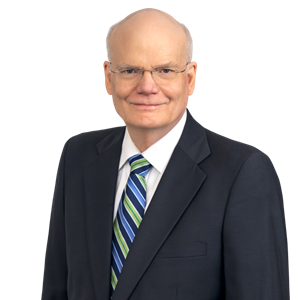
Ninth Circuit Overturns Portions of FCC Order on Wireless Facility Modifications
Local governments prevailed on two key issues in League of California Cities v. Federal Communications Commission (FCC), the United States Court of Appeal for the Ninth Circuit’s long-awaited decision on when federal law requires localities to approve a certain type of modifications to existing wireless facilities known as an eligible facilities request (EFR). Local governments should review their wireless siting application procedures for compliance with federal law and this decision in order to protect local permit conditions as much as possible when faced with future EFRs. The case arose from a local government challenge to the FCC’s interpretation of its EFR rules (codified at 47 C.F.R. § 1.6100 et seq.), which implement Section 6409(a) of the Middle Class Tax Relief Act of 2012 (codified at 47 U.S.C. § 1455(a)).
Siding with local governments, the Ninth Circuit: 1) overturned the FCC’s misinterpretation of the term “conceal”; and 2) limited the FCC’s attempt to end-run the requirements of the Administrative Procedure Act (APA). The Ninth Circuit otherwise upheld the FCC’s interpretations that:
- require express evidence to enforce a pre-existing permitting condition within the 6409 process;
- give localities less discretion as to when the Section 6409 shot clock begins;
- imposes no total cumulative limit on the number of additional cabinets attached to poles; and
- permit greater height increases than FCC rules previously allowed.
In more detail, the Ninth Circuit opinion provided as follows:
Concealment receives greater protection. Localities successfully persuaded the court to invalidate the FCC’s ruling that the term “conceal” means only “disguise” and does not mean “hide.” The Ninth Circuit decision protects permitting conditions that hide wireless installations, such setting back rooftop facilities from the edge of the building, not solely conditions that would make an installation look like something else, such as a pine tree, flag pole, or chimney. As the court noted, the correct definition of concealment is significant because such elements receive greater protection than other permit conditions under 47 C.F.R. § 1.6100(b)(7)(v).
Localities must document permitting conditions to preserve them. On the other hand, the court upheld the FCC’s ruling that pre-existing permitting conditions on a wireless facility are not enforceable against an EFR unless there is “express evidence that at the time of [the original] approval the locality required the feature and conditioned approval upon its continuing existence.” It is critically important, therefore, that localities clearly document concealment and any other condition at the time the original siting approval is granted.
Federal rules fix the start of the 60-day shot clock. If a locality fails to respond to an EFR within 60 days, it is deemed granted pursuant to federal law per 47 C.F.R. § 1.6100(c). The court upheld the FCC’s decision that the EFR shot clock begins when an applicant satisfies both of the following criteria: (1) takes the first procedural step that the local jurisdiction requires, and (2) submits written documentation showing that a proposed modification is an eligible facilities request. Under this rule, a locality should adopt its own EFR application form and require that an EFR application must be made on that form to ensure that is the first procedural step in triggering the shot clock.
The court permits proliferation of cabinets and equipment. The Ninth Circuit upheld the FCC’s equipment cabinet rule, concluding that there is no cumulative numeric limit on the number of additional cabinets that may be attached to poles under the FCC’s rules. The court also affirmed that a single piece of equipment in its own housing does not count toward the cabinet limit. The court did grant localities some flexibility to prevent applicants from attempting to evade the cabinet modification limit artificially “splitting” their requests into smaller portions.
More expansive limits on permitted height increases upheld. The court upheld the FCC’s interpretation that the height limitation—which, in part, requires approval of any change that does not increase the height of a tower by more than 10%—excludes the height of the new antenna itself and applies only to the separation between the top of an existing antenna array and the bottom of a new antenna array.
FCC must comply with the Administrative Procedure Act (APA). The court also found the FCC cannot end-run the requirements of the APA by using a declaratory ruling where a full notice and comment rulemaking is needed. The court’s opinion recognized the FCC could not adopt an interpretive ruling and then, after the fact, argue the less formal proceeding was sufficient to adopt new rules. The Ninth Circuit decision provides local governments with an important tool to press against the FCC if it attempts similar misbehavior in the future.
BBK represented more than 20 clients, filing on behalf of City of Boston, et al., and argued the case in San Francisco on July 11, 2023.
Compliance with FCC rules limiting local wireless siting authority can be difficult to navigate. In the wake of the Ninth Circuit’s decision, we recommend that local governments seek guidance to ensure local procedures are sufficient to protect the local permitting process as much as possible under the federal rules.
Disclaimer: BBK Legal Alerts are not intended as legal advice. Additional facts, facts specific to your situation or future developments may affect subjects contained herein. Seek the advice of an attorney before acting or relying upon any information herein.





